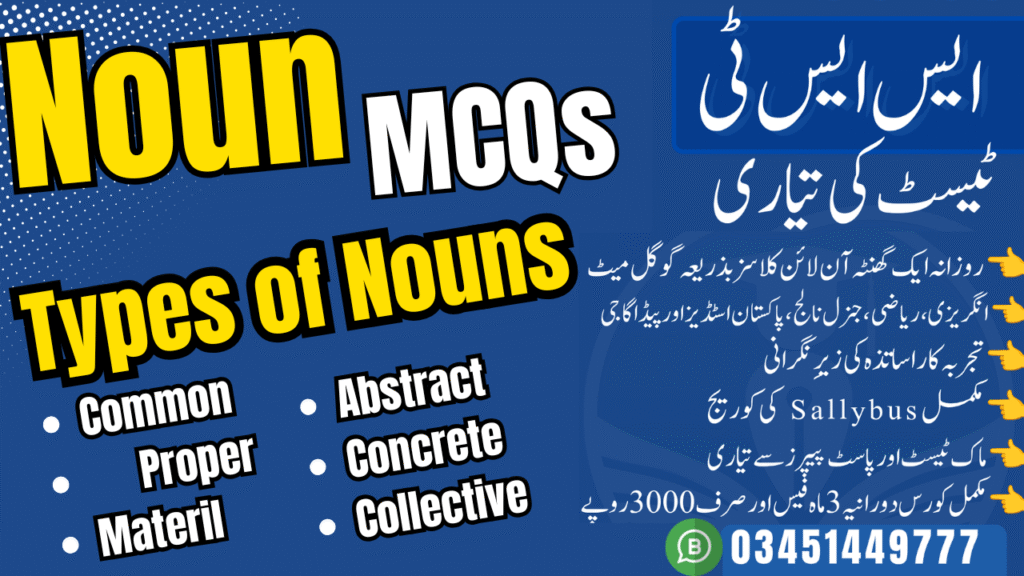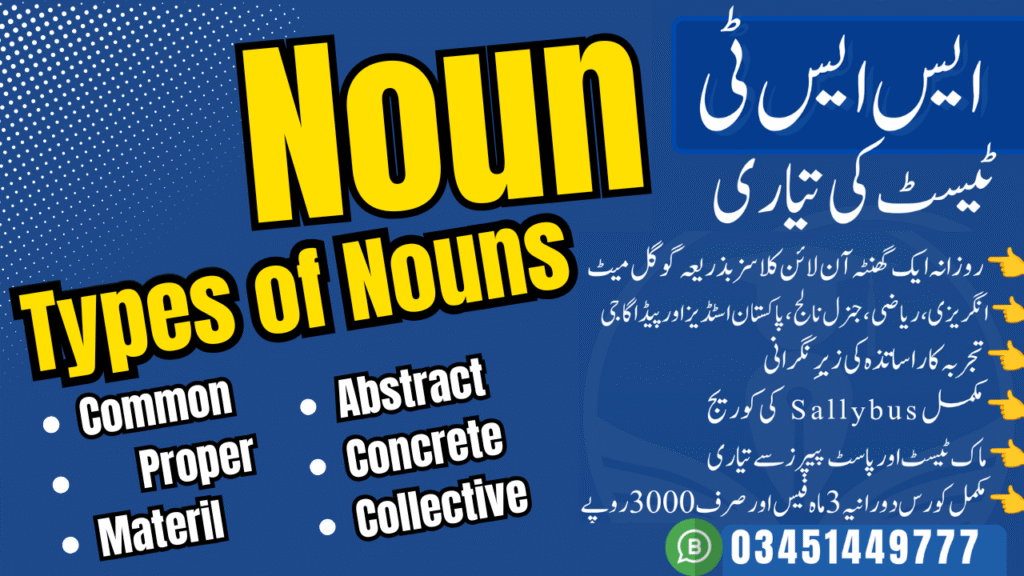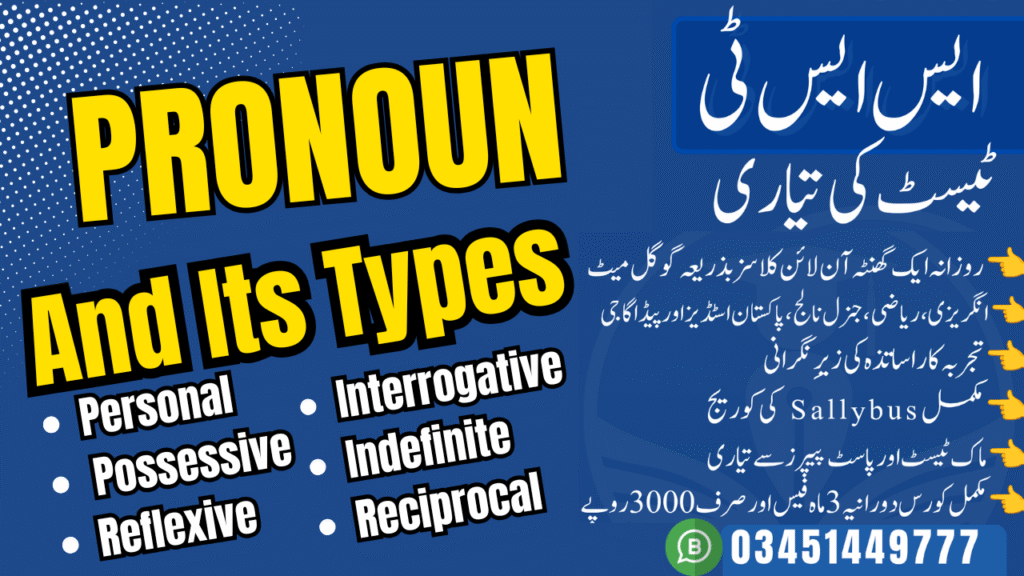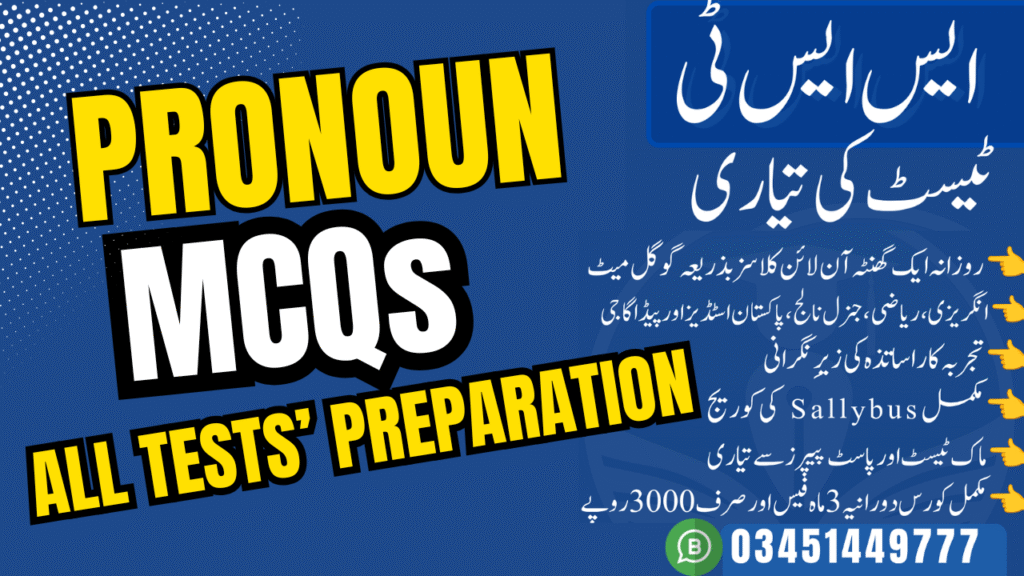By Arshad Yousafzai for ZONE OF EDUCATION.
- Have you ever been confused by a grammar tense?
- Have you ever wondered why we say “I have finished” instead of “I finished“?
- Or why a news reporter might say, “The president has arrived in Karachi,” even though the arrival happened in the past?
- If you have, you’ve come to the right place!
The present perfect tense describes past actions or states that have a connection to the present, whether by continuing into the present, having a result in the present, or being an experience up to the present moment.
It is formed using the auxiliary verbs “have” or “has” followed by the past participle of the main verb. Key uses include describing actions continuing from the past (e.g., “I have lived here for ten years“), completed actions with a present effect (e.g., “I’ve lost my keys, so I can’t get in“), and past experiences (e.g., “I have never been to Naran“).
Today, we’re going to master the Present Perfect Tense. Think of it as a unique and powerful “bridge” in English grammar. It’s a special tense that connects the past with the present, allowing us to speak with more nuance and precision. Mastering it is a crucial step toward sounding more natural and fluent in English.
In this comprehensive lesson, we will cover everything you need to know. We’ll start by cracking the code of what the Present Perfect really is. Then, we’ll learn how to build sentences, explore its many uses, learn to avoid common mistakes, and finally, put our knowledge to the test with practice exercises. By the end of this session, you will have a deep and confident understanding of the Present Perfect Tense.
Introduction to the Present Perfect Tense
Tense and Aspect
Is the Present Perfect a past tense or a present tense?
This is a trick question, and it’s the primary source of confusion for many learners. The answer isn’t a simple “past” or “present.” The real answer lies in understanding two fundamental concepts of English grammar: Tense and Aspect. Once you grasp this distinction, the Present Perfect will suddenly make perfect sense.
Tense (Time): The “When”
Tense is the grammatical category that locates an action in time. It tells us when something happens. In English, there are three primary tenses:
- Past: The action happened before now (e.g., I walked).
- Present: The action is happening now or is generally true (e.g., I walk).
- Future: The action will happen after now (e.g., I will walk).
Tense is all about the timeline. It’s straightforward.
Aspect (Flow): The “How”
Aspect, on the other hand, is about the flow or state of an action. It doesn’t just tell us when the action happened, but how the speaker views it in relation to time.
- Is it a single, complete block of action?
- Is it ongoing?
- Is it repeated?.
The main aspects in English are:
- Simple Aspect: Views the action as a single fact or a complete event (e.g., I walk, I walked, I will walk).
- Progressive (or Continuous) Aspect: Views the action as ongoing or in progress at a certain time (e.g., I am walking, I was walking, I will be walking).
- Perfect Aspect: This is our key! The Perfect Aspect is used to look back at an action from a specific point in time. It indicates that an action was completed before that point in time but has relevance to it, often focusing on the resulting state. The core idea is
“completed with relevance.”
The “Present Perfect” Formula
Now, let’s look at the name of our tense again: Present Perfect. The name itself is a formula!
- Present refers to the Tense. This means our viewpoint, our anchor in time, is now. We are standing in the present and looking back.
- Perfect refers to the Aspect. This means we are looking back at an action that is completed and has a connection or relevance to our present viewpoint.
So, the Present Perfect Tense is not simply a past or present tense. It is a grammatical construction that uses the Present Tense to talk about a completed (Perfect Aspect) action that has a connection to the present. This is the master key to understanding everything that follows.
To help you visualize where the Present Perfect fits within the entire English grammar system, let’s look at a complete map of the English verb tenses. You’ll see that it’s not just a random collection of 12 tenses, but a logical grid formed by combining the three tenses with the four aspects.
Table 1: The English Tense-Aspect Matrix
| Simple Aspect | Continuous (Progressive) Aspect | Perfect Aspect | Perfect Continuous Aspect | |
| Present Tense | I work | I am working | I have worked | I have been working |
| Past Tense | I worked | I was working | I had worked | I had been working |
| Future Tense | I will work | I will be working | I will have worked | I will have been working |
As you can see, the Present Perfect sits right at the intersection of the Present Tense and the Perfect Aspect. This chart should help you see it as part of a logical system, not a strange exception.
The Basic Composition
Now that we understand the theory, let’s look at the basic building blocks. The Present Perfect Tense is always formed with two components :
Formula: Subject + have/has + Past Participle (V3)
- have/has: This is the auxiliary (or helping) verb. It changes based on the subject.
- Past Participle: This is often called the “third form” of the verb (V3). For regular verbs, it’s the same as the simple past form (it ends in -ed) Play -> Played -> Played. For irregular verbs, it has a unique form that you need to learn.
For example:
- go -> went -> gone
- see -> saw -> seen
- do -> did -> done
Let’s see it in action with a few simple examples:
- I have seen that city.
- She has finished her work.
- They have traveled to naran.
Don’t worry about memorizing all the past participles right now. We’ll discuss them more as we go.
The important thing to remember is this core structure: have/has + V3.
The Present Perfect Tense
In this next part of our lesson on the Rules of Present Perfect, we’re going to dive deep into the mechanics and Uses of Present Perfect. We’ll break down how to form every type of sentence and explore the many jobs this versatile tense can do.
A. Definition & Purpose
Let’s start with a clear, formal definition.
Definition: The Present Perfect Tense is a verb form that expresses a past event that has present consequences. It creates a bridge between the past and the present by connecting a completed action to the present moment.
- When and why do we choose to use it over, say, the Simple Past?
We use the Present Perfect when the result, relevance, or consequence of a past action is more important than the specific time it happened. The focus is always on the now.
Let’s look at two Examples of Present Perfect that illustrate this:
- “I have lost my wallet.”
- The action of losing the wallet happened in the past. But the sentence isn’t a story about the past. It’s an explanation of a present problem: I don’t have my wallet now, and I can’t pay for tea. The focus is on the present result.
- “He has passed his exam.”
- The exam happened in the past. But the important information is the present result: He is happy now. He is qualified now. He can celebrate now.
The purpose of the Present Perfect is to use the past to explain the present.
B. Structure / Formula: Building Sentences
- How do we build sentences?
Here are the formulas for every situation, complete with multiple examples.
Affirmative (Positive) Sentences
This is the basic structure we’ve already seen.
- Formula: Subject + have/has + Past Participle (V3) +…
- Examples:
- She has visited the museum.
- We have completed the project.
- I’ve read that book. (Notice the common contraction I’ve for I have)
- He’s written three emails. (The contraction he’s can mean he is or he has. The past participle written tells us it’s he has.)
Negative Sentences
To make a sentence negative, we simply add not after the auxiliary verb have or has.
- Formula: Subject + have/has + not + Past Participle (V3) +…
- Examples:
- They have not (haven’t) gone to Peshawar.
- He has not (hasn’t) arrived yet.
- You haven’t tried sushi before.
Interrogative (Yes/No Questions)
To ask a question that can be answered with “yes” or “no,” we invert the subject and the auxiliary verb.
- Formula: Have/Has + Subject + Past Participle (V3) +…?
- Examples:
- Have you eaten lunch?
- Yes, I have. / No, I haven’t.
- Has she called you?
- Yes, she has. / No, she hasn’t.
WH-Questions
To ask for more specific information (like where, what, why, etc.), we place the WH-word at the very beginning of the sentence.
- Formula: Wh-word + have/has + Subject + Past Participle (V3) +…?
- Examples:
- Where have you been?
- What have they done?
- Why has he left so early?
- How many times have you visited Paris?
To make this even clearer, here is a quick-reference table summarizing all four sentence structures.
Table 2: Present Perfect Sentence Structures at a Glance
| Sentence Type | Formula | Example |
| Affirmative | Subject + have/has + Past Participle | She has finished the report. |
| Negative | Subject + haven’t/hasn’t + Past Participle | She hasn’t finished the report. |
| Yes/No Question | Have/Has + Subject + Past Participle? | Has she finished the report? |
| WH-Question | Wh-word + have/has + Subject + Past Participle? | Why has she finished the report? |
C. Usage / Functions of Present Perfect Tense
Grammar books often give you a long list of “uses” for the Present Perfect, which can feel like a lot to memorize. But here’s a secret: all these uses are just different flavors of one core idea. Every single function of the Present Perfect stems from its fundamental role as a bridge connecting a past action to the present moment.
Let’s explore these uses, always keeping that core idea in mind.
1. Actions with a Result in the Present
This is the most direct and obvious use. The action is finished, but its consequence is important and often visible now. The focus is on the result, not the action itself.
- Examples:
- I have lost my keys. (The present result is that I can’t get into my house.)
- She has broken her arm. (The present result is that her arm is in a cast.)
- The rain has stopped. (The present result is that the ground is wet, and we can go outside.)
2. Life Experiences
We use the Present Perfect to talk about experiences that happened at some unspecified time in a person’s life.
Why?
Because a person’s life is an unfinished period of time, and their memories and experiences are part of who they are now. The specific time of the experience is not important; the fact that it is part of their life story is.
- Examples:
- He has traveled to Africa. (This is part of his life experience.)
- I have never eaten mangoes. (In my entire life up to this present moment.)
- Have you ever seen a camel? (At any point in your life up to now?)
3. Unfinished Time Periods
This is a very common and important use. We use the Present Perfect for actions that happened within a period of time that is not yet over. This includes time frames like today, this week, this month, and this year. The connection to the present is the time period itself, which is still ongoing.
- Examples:
- She has drunk three cups of tea today. (Today is not over; she might drink a fourth!)
- We have had two meetings this week. (The week is still in progress; we might have more.)
- I haven’t seen her this month. (The month is not finished, so I still might see her.)
4. Change Over Time
The Present Perfect is perfect for describing a change that has happened over a period of time, leading up to the present.
- Examples:
- Your English has improved a lot! (The improvement happened over time and is evident now.)
- The city has changed so much since I was a boy.
- My son has grown a lot in the last year.
5. Accomplishments & Achievements
We use this tense to talk about major accomplishments or achievements. The present relevance is that this achievement is now a fact, a part of history, or a new reality.
- Examples:
- Scientists have discovered a new planet. (The planet’s existence is now a known fact.)
- Man has walked on the moon. (This is a historical achievement of humanity that remains true.)
- Our team has won the championship! (The present result is that we are the champions.)
6. With Adverbs of Recent Time (just, already, yet)
These adverbs are natural partners for the Present Perfect because their meanings are inherently tied to the present moment of speaking.
- just: For actions that happened a very short time ago.
- They have just left. (They left moments ago.)
- already: For actions that happened sooner than expected.
- I’ve already finished my homework. (I finished it before you thought I would.)
- yet: For expected actions, used in questions and negative sentences.
- He hasn’t arrived yet. (We expect him to arrive soon.)
- Have you eaten yet? (I expect that you will eat soon.)
7. With Adverbs of Experience (ever, never)
These adverbs are used with the “life experiences” function to ask about “any time up to now” or to state “no time up to now”.
- ever: Used in questions to mean “at any time in your life.”
- Have you ever been to Canada?
- never: Used in statements to mean “at no time in your life.”
- I have never seen snow.
D. Subject-Verb Agreement: Has or Have?
This is one of the most basic rules, but it’s essential to get it right every time. The choice between has and have depends entirely on the subject of the sentence.
- Use has with third-person singular subjects:
- This includes the pronouns he, she, it, and any singular noun (e.g., the boy, the company, Sarah).
- He has decided.
- She has traveled.
- The company has grown.
- My friend has called.
- Use have with all other subjects:
- This includes the pronouns I, you, we, they, and any plural noun (e.g., the boys, the companies, my parents).
- I have decided.
- You have traveled.
- We have grown.
- My friends have called.
Let’s look at some common errors to avoid:
- She have finished. ❌
- She has finished. ✅
- The people has spoken. ❌
- The people have spoken. (People is a plural noun.) ✅
- My brother have gone to the store. ❌
- My brother has gone to the store. ✅
E. Time Expressions / Signal Words
Certain words and phrases act like signals or clues that the Present Perfect is the right tense to use. They are often called “signal words.”
Why?
Because their meaning naturally aligns with the Present Perfect’s job of connecting the past to the present.
Here is a comprehensive guide to the most common signal words, their meanings, and where they typically go in a sentence.
Table 3: A Guide to Present Perfect Signal Words
| Signal Word(s) | Meaning / Function | Typical Position | Example Sentence |
| just | A very recent past action | Between have/has and the past participle | I have just finished my report. |
| already | An action that happened sooner than expected | Between have/has and the past participle | She has already seen that film. |
| yet | An expected action (up to now) | At the end of a negative sentence or question | They haven’t arrived yet. / Have you eaten yet? |
| ever | At any time in your life (up to now) | Between the subject and past participle in questions | Have you ever been to Japan? |
| never | At no time in your life (up to now) | Between have/has and the past participle | I have never tried scuba diving. |
| for | Measures a duration of time | After the main verb | He has lived here for ten years. |
| since | Indicates the starting point of an action | After the main verb | We have known each other since 2015. |
| recently / lately | In the near past | Usually at the end of the sentence | I haven’t seen him recently. / She has traveled a lot lately. |
| so far / until now / up to now | From the past until this moment | Usually at the end of the sentence | We have received five applications so far. |
| this week / today / this year | An unfinished period of time | At the end of the sentence | I have called my mother twice this week. |
F. Common Mistakes
Even advanced learners can make mistakes with the Present Perfect. Let’s look at the most common pitfalls and make sure you can avoid them.
Mistake 1: Subject-Verb Agreement
We just covered this, but it’s so common it’s worth repeating. Always match has with third-person singular subjects and have with all others.
We just covered this, but it’s so common it’s worth repeating. Always match has with third-person singular subjects and have with all others.
Shehavefinished her work.She has finished her work.
Mistake 2: Using the Wrong Verb Form (Past Participle)
The formula requires the past participle (V3), not the simple past (V2). For regular verbs, these forms are the same (e.g., walked, walked), which is why the mistake often happens with irregular verbs where the forms are different.
I havesawthat movie.(saw is the simple past)
I have seen that movie. (seen is the past participle)
Here are a few more common irregular verbs to watch out for:
- ate -> eaten (I have eaten.)
- did -> done (He has done it.)
- went -> gone (They have gone.)
- drank -> drunk (We have drunk the water.)
- began -> begun (The show has begun.)
Mistake 3: Using Present Perfect with Finished Time Words
This is perhaps the most critical rule to remember. The Present Perfect cannot be used with time expressions that refer to a specific, completed time in the past.
For those, you must use the
Simple Past.
- I have seen him yesterday. ❌
- I saw him yesterday. ✅
- She has visited Paris in 2019. ❌
- She visited Paris in 2019. ✅
- We have finished the project last week. ❌
- We finished the project last week. ✅
Mistake 4: Confusing been and gone
Both are past participles of the verb “to go,” but they have very different meanings in the Present Perfect.9
- been: Implies a completed trip. The person went somewhere and has returned.
- She has been to the shop. (Meaning: She went to the shop, and now she is back home.)
- gone: Implies an unfinished trip. The person went somewhere and is still there.
- She has gone to the shop. (Meaning: She is at the shop right now.)
G. Present Perfect Tense Comparison with Other Tenses
To truly master the Present Perfect, you need to understand not just what it is, but also what it is not. Choosing the right tense is often about the speaker’s perspective and focus, not just the raw facts of a situation. For example, the events in “I broke my leg” and “I’ve broken my leg” are identical. The difference is the speaker’s intent: the first is a story about the past, while the second is an explanation of the present. Let’s compare it with other tenses to make the boundaries crystal clear.
Present Perfect vs. Simple Past (The Critical Difference)
This is the most important distinction to master.
Table 4: Present Perfect vs. Simple Past
| Feature | Present Perfect | Simple Past |
| Time Reference | Unspecified time in the past. | Specific, finished time in the past. |
| Connection to Present | Strong connection. The action is relevant now. | No connection. The action is finished and in the past. |
| Speaker’s Focus | On the present result or relevance. | On the past action or event. |
| Signal Words | ever, never, yet, already, for, since, so far | yesterday, last week, in 2010, ago |
| Example | I have lost my keys. (I can’t find them now.) | I lost my keys yesterday. (A story about yesterday.) |
| Example | She has lived in London for five years. (She still lives there.) | She lived in London for five years. (She doesn’t live there now.) |
Present Perfect vs. Present Simple
This comparison helps clarify the difference between a completed action and a habitual one.
Table 5: Present Perfect vs. Present Simple
| Feature | Present Perfect | Present Simple |
| Meaning | A past action with present relevance. | A habitual action, general truth, or current state. |
| Focus | Completed action. | Routine or fact. |
| Example | She has worked as a doctor for ten years. (Describes her career up to now.) | She works as a doctor. (Describes her current job/profession.) |
| Example | I have read that book. (The action of reading is finished.) | I read books every night. (This is my habit.) |
Present Perfect vs. Present Continuous
Here, we compare a completed action with one that is happening at this very moment.
Table 6: Present Perfect vs. Present Continuous
| Feature | Present Perfect | Present Continuous |
| Meaning | An action completed before now. | An action in progress right now. |
| Focus | Result of a finished action. | The ongoing action itself. |
| Example | I have written the email. (It’s finished and ready to send.) | I am writing the email. (I am in the middle of writing it now.) |
| Example | They have built a house. (The house is complete.) | They are building a house. (The construction is happening now.) |
Present Perfect vs. Present Perfect Continuous
This is a more advanced distinction, but a crucial one for fluency. Both tenses talk about actions that started in the past and connect to the present, but their focus is different.
Table 7: Present Perfect vs. Present Perfect Continuous
| Feature | Present Perfect | Present Perfect Continuous |
| Focus | On the result or completion of an action. | On the duration or continuous nature of the activity itself. |
| Emphasis | How much? How many? | How long? |
| Action State | The action is usually finished. | The activity may or may not be finished. |
| Example (Result vs. Duration) | I’ve read that book. (Focus on completion. I finished it.) | I’ve been reading that book. (Focus on the activity. I might still be reading it.) |
| Example (How many vs. How long) | She has written three emails. (Focus on the number completed.) | She has been writing emails all morning. (Focus on the duration.) |
| Example (Stative Verbs) | Used with stative verbs (know, like, own). I’ve known him for years. | Not used with stative verbs. ❌ I’ve been knowing him… |
H. Exercises / Practice: Time to Test Your Knowledge!
Alright, class, theory is important, but practice is where true mastery happens. Let’s put what we’ve learned to the test with a few exercises. Try to complete them on your own, and then check your answers at the end.
Activity 1: Fill in the Blanks
Complete the sentences by putting the verb in brackets into the correct Present Perfect form (have/has + past participle).
- She ______________ (visit) Paris three times.
- We ______________ (not / find) the solution yet.
- I ______________ (just / finish) my lunch.
- They ______________ (live) in this city for ten years.
- ______________ you ever ______________ (see) a shooting star?
Activity 2: Correct the Errors
Find the mistake in each sentence and rewrite it correctly.
- He have visited London.
- I have saw that movie last week.
- They haven’t arrived already.
- Did you ever go to Paris?
- She has wrote three books this year.
Activity 3: Sentence Transformation
Change the following affirmative sentences into both negative and interrogative (yes/no question) forms.
- They have seen the movie.
- Negative: ______________________________
- Interrogative: ______________________________
- He has finished his homework.
- Negative: ______________________________
- Interrogative: ______________________________
Activity 4: Short Quiz (MCQs)
Choose the best option to complete each sentence.
- I ______ that movie before.
a) saw
b) have seen
c) has seen - She ______ in Toronto since 2022.
a) has lived
b) lived
c) is living - They went to Italy ______.
a) yet
b) for two years
c) in 2019 - “Where is Anna?” “She ______ to the store.”
a) has been
b) has gone
c) went - We ______ our homework already.
a) finished
b) have finished
c) has finished
Answer Key
Activity 1: 1. has visited, 2. have not (haven’t) found, 3. have just finished, 4. have lived, 5. Have you ever seen
Activity 2: 1. He has visited London. 2. I saw that movie last week. 3. They haven’t arrived yet. 4. Have you ever been to Paris? 5. She has written three books this year.
Activity 3: 1. Negative: They haven’t seen the movie. Interrogative: Have they seen the movie? 2. Negative: He hasn’t finished his homework. Interrogative: Has he finished his homework?
Activity 4: 1. b, 2. a, 3. c, 4. b, 5. b
Revision
The Power of the Present Perfect in English Communication
We’ve covered a lot of ground today, from the deep theory of tense and aspect to the practical details of sentence construction and usage. The Present Perfect is more than just a grammar rule; it’s a tool for sophisticated communication. It’s the “bridge tense” that allows you to connect past events to the present moment, adding layers of meaning, relevance, and nuance to your speech and writing. Mastering it will unlock a new level of fluency and help you express your thoughts exactly as you intend.
Takeaways (Summary)
If you remember nothing else from this lesson, hold on to these key points:
- The Present Perfect is a combination: Present Tense (viewpoint is now) + Perfect Aspect (action is completed with present relevance).
- The basic formula is always have/has + Past Participle (V3).
- The golden rule: NEVER use the Present Perfect with a specific, finished past time (like yesterday, last week, or in 2015). Use the Simple Past for that.
- Its many functions—talking about results, life experiences, unfinished time, changes, and accomplishments—all stem from that core idea of connecting the past to the present.
- Pay close attention to signal words like for, since, just, already, yet, ever, and never, as they are your best clues for when to use this tense.
Present Perfect Tense 100 MCQs Test
WhatsApp: 0301-1446777
1 of 100
Score: 0
Quiz Complete!
You answered out of 100 questions correctly.







